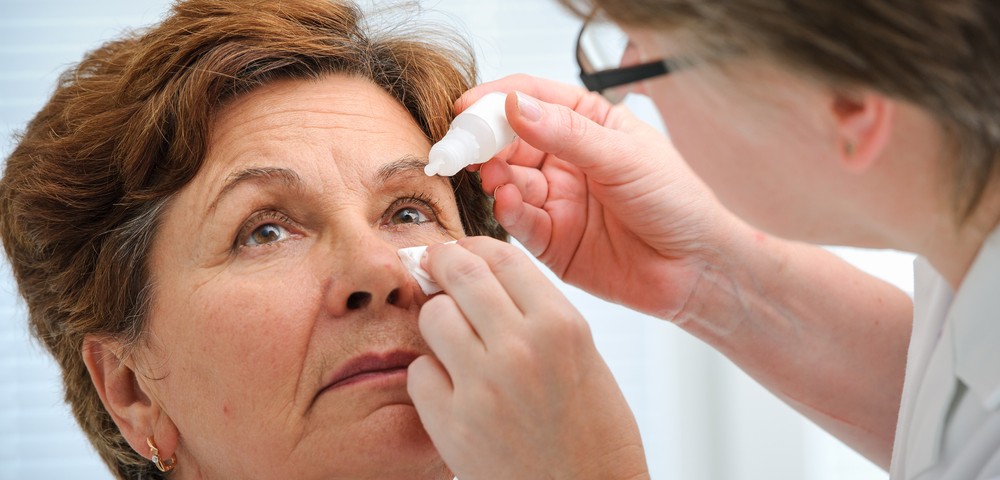In a recent study, a team of researchers found a new compound that can be administered as eye drops and partly reversed cataracts in a mice model. The study, “Pharmacological chaperone for α-crystallin partially restores transparency in cataract models,” was published in the journal Science.
Cataracts are the most common cause of vision loss due to aging, currently affecting 20 million individuals worldwide, and are considered by the World Health Organization to be a “priority eye disease.” The condition is characterized by clouding of the lens in the eye due to the accumulation of aggregates of misfolding proteins, specifically those known as crystallins, the main constituents of eye lens’ fiber cells.
Jason Gestwicki, PhD, associate professor of pharmaceutical chemistry at University of California, San Francisco (UCSF), and co-lead author, noted in a press release, “Shortly after you’re born, all the fiber cells in the eye lose the ability to make new proteins, or to discard old proteins. So the crystallins you have in your eyes as an adult are the same as those you’re born with.”
Fiber cells are very susceptible to damage and crystallins are crucial for maintaining fiber cells’ transparency and flexibility, which they achieved with the help of proteins called “chaperones,” thus “keeping crystallins soluble in a delicate equilibrium that’s in place for decades and decades,” Dr. Gestwicki explained.
Misfolding and clumping of crucial proteins also characterizes other disorders associated with aging, such as neurodegenerative Alzheimer’s disease. However, cataract development differs in the proteins forming the aggregates and the place where they are formed. Here, the team of scientists led by Leah N. Makley, PhD, and Kathryn McMenimen, PhD, investigated a property that changes between properly folded crystallins and their clumped-together proteins (called amyloids) — the temperature at which they melt.
They used a technique called high-throughput differential scanning fluorimetry (HT-DSF) in which proteins, upon reaching their melting point, emit light. The team applied heat (by using HT-DSF) to amyloid forms when treated with chemical compounds, using 2,450 compounds, and eventually focusing on the members of a chemical class known as sterols. Notably, a particular member of this class, lanosterol, was recently reported to reverse cataracts when injected directly into the eye.
The authors tested 32 additional sterols and found one, which they called “compound 29,” as the most fit to be used in cataract-dissolving eye drops. They tested the effects of compound 29 first in laboratory dish tests, where they observed compound 29 not only stabilized and prevented crystallins from aggregating and forming amyloids, but was also capable of dissolving amyloids that had already formed. When tested in an in vivo mouse model, carrying mutations that make it predisposed to cataracts, compound 29 administered as eye drops partially restored transparency to mice lenses. The same results were achieved when using another type of mouse model, one that naturally developed age-related cataracts, as well as in human cataract lens tissue (obtained during surgery).
The efficacy of compound 29 as a cataract treatment in humans, however, can only be established through clinical trials, since the method used in their research for detecting lens transparency is not a direct measure of visual acuity, the researchers explained.
ViewPoint Therapeutics, a company founded by a former postdoctoral fellow in the Gestwicki laboratory, is developing compound 29 for human use. Dr. Gestwicki noted, however, that these results carry broad applications and could allow researchers to understand and test their findings in neurodegenerative diseases. “If you look at an electron micrograph at the protein aggregates that cause cataracts, you’d be hard-pressed to tell them apart from those that cause Alzheimer’s, Parkinson’s, or Huntington’s diseases. By studying cataracts, we’ve been able to benchmark our technologies and to show by proof-of-concept that these technologies could also be used in nervous system diseases, to lead us all the way from the first idea to a drug we can test in clinical trials.”


